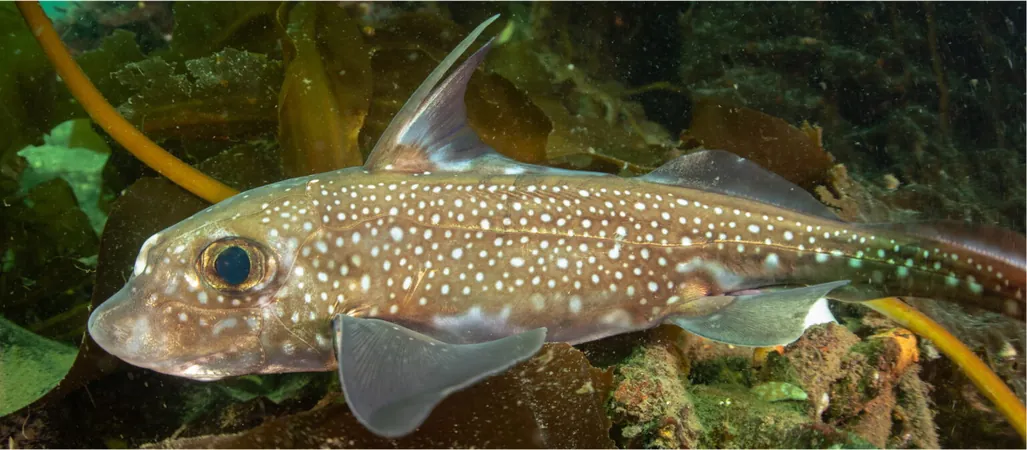
The Ratfish Revolution: Teeth on the Forehead? Unbelievable, Yet True!
2025-09-11
Author: Ting
Unveiling the Unusual: Meet the Ratfish
When you think of teeth, the mouth is the first place that comes to mind. But for the extraordinary ratfish, also known as the chimaera or ghost shark, teeth have found a surprising new home—on its forehead! This cartilaginous fish, which measures about two feet long, is not a shark but rather a distant cousin that split from sharks roughly 400 million years ago. The ratfish's unique anatomy and peculiar habits make it one of the ocean's most fascinating creatures.
The Tenaculum: A Toothsome Surprise!
At the heart of this revelation is the tenaculum—a retractable appendage located between the ratfish's eyes, adorned with a crown of teeth. Karly Cohen, a marine biologist at the University of Washington, describes it as resembling a small peanut when tucked away, but when extended, it transforms into a hook-like rod covered in jagged, claw-shaped teeth. This bizarre feature serves a specific purpose: male ratfish use their forehead teeth to grasp onto female partners during mating, ensuring a secure connection.
A Deep Dive into Development
Cohen and her colleagues embarked on a scientific journey to unravel the mystery behind these unusual teeth. They gathered spotted ratfish from the San Juan Channel, keen to understand the growth and functionality of the tenaculum. Surprisingly, both male and female ratfish develop this appendage during their youth, but it is only the males who carry it into adulthood, emphasizing its role in reproduction.
Rewriting the Rulebook: Teeth Anywhere But the Mouth?
Upon analysis, researchers discovered that the forehead teeth were unlike typical dermal denticles found in modern sharks. They actually contain dental lamina—tissue that produces teeth similar to those in the mouth—indicating that ratfish have essentially grown mouth teeth outside their jaws! This groundbreaking finding challenges everything we thought we knew about the placement of teeth in vertebrates.
A Glimpse into Evolutionary History
The intrigue deepens when we look at fossil records, revealing prehistoric chimaeras like Helodus simplex, which showcased early versions of the tenaculum closer to the jaw. These findings suggest that the ratfish's forehead teeth are part of a long evolutionary legacy of teeth adapting to new locations—a remarkable narrative of adaptation in the animal kingdom.
The Future of Teeth: A New Era?
Cohen emphasizes that this discovery highlights the adaptability of dental systems across vertebrates, opening doors to further exploration. "By redefining what constitutes a tooth and considering where they can grow, we may uncover more remarkable adaptations in the animal world," she notes. The ratfish, with its unique forehead teeth, has sparked a revolution in our understanding of teeth, proving that nature is full of surprises, constantly defying conventional wisdom.



 Brasil (PT)
Brasil (PT)
 Canada (EN)
Canada (EN)
 Chile (ES)
Chile (ES)
 Česko (CS)
Česko (CS)
 대한민국 (KO)
대한민국 (KO)
 España (ES)
España (ES)
 France (FR)
France (FR)
 Hong Kong (EN)
Hong Kong (EN)
 Italia (IT)
Italia (IT)
 日本 (JA)
日本 (JA)
 Magyarország (HU)
Magyarország (HU)
 Norge (NO)
Norge (NO)
 Polska (PL)
Polska (PL)
 Schweiz (DE)
Schweiz (DE)
 Singapore (EN)
Singapore (EN)
 Sverige (SV)
Sverige (SV)
 Suomi (FI)
Suomi (FI)
 Türkiye (TR)
Türkiye (TR)
 الإمارات العربية المتحدة (AR)
الإمارات العربية المتحدة (AR)